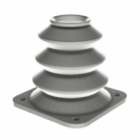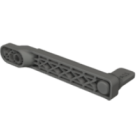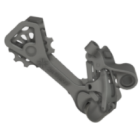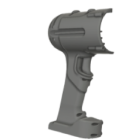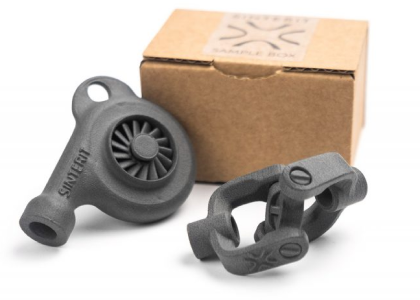SLS vs other 3D printing methods: when to choose it
Choosing the right 3D printing technology is never about a single metric. It’s about how a machine performs under your specific use case — not just in terms of print quality, but across repeatability, material handling, part strength, speed, and operational simplicity. SLS (Selective Laser Sintering) has emerged as a go-to solution for companies that move beyond visual prototyping and into functional validation, small-batch production, or part-ready outputs.
Below, we explore where SLS stands out — and when it becomes the smarter alternative to FDM, SLA, or even MJF.
When geometry and functionality come first
FDM and SLA both offer great value in early-stage development. FDM is fast and cheap for rough concepts. SLA excels at fine detail and surface finish. But when your part needs to combine structural strength, mechanical durability, and design freedom, SLS delivers where other technologies fall short.
SLS builds parts from powder — without support structures. That means you can print interlocking components, internal channels, organic forms, and mechanical features in one go. No need to redesign around overhangs or post-processing breakaways. For engineers who want to test functional assemblies without compromises, SLS is often the only way forward.
When you need more than a prototype
SLA and FDM are excellent for visual or fit checks, but they have real limitations under stress. SLS produces nylon-grade, industrial-level parts that can handle mechanical loads, repeated use, and real-world environments. If your prototypes are breaking or your parts are warping in the field, that’s a sign you’ve outgrown entry-level printing.
SLS excels in:
- functional prototyping under load,
- pre-series and bridge manufacturing,
- production-ready polymer parts with isotropic strength.
Unlike SLA, there’s no brittleness. Unlike FDM, there’s no layer peeling or anisotropy under tension. And unlike MJF, SLS gives you more open material control and predictable powder handling.
When you’re ready to print parts — not just shapes
The most common trigger to switch from FDM or SLA to SLS is when 3D printing becomes a critical part of your product development, not just an aid. If you’re validating parts, not just showing them. If you’re sending prints to customers or testing them in devices. If you’re tired of redesigning parts to suit the printer, rather than the other way around — then it’s time for SLS.
In short: Choose SLS when performance, freedom of design, and output quality outweigh the need for low-cost experimentation.
Summary: a technology for confident decisions
SLS isn’t a replacement for all 3D printing — but it is the right step forward when your application outgrows hobby-grade capabilities. If you want to eliminate support headaches, test working parts, and bring short-run production in-house, SLS gives you the right balance of flexibility, quality, and control.
If your team is at the edge of what’s possible with FDM or SLA — it’s likely time to step up.
Explore also
- What to know before buying a 3D printer
- What is the highest quality 3D printer?
- Factors to consider when buying a 3D printer
- 3D printing comparison
- How to future-proof your 3D printer investment
- What to buy with a 3D printer
Related categories
 Austria
Austria  Bosnia and Herzegovina
Bosnia and Herzegovina  Bulgaria
Bulgaria  Croatia
Croatia  Czech Republic
Czech Republic  Denmark
Denmark  Estonia
Estonia  Finland
Finland  France
France  Germany
Germany  Greece
Greece  Hungary
Hungary  Ireland
Ireland  Italy
Italy  Latvia
Latvia  Lithuania
Lithuania  Poland
Poland  Portugal
Portugal  Romania
Romania  Slovakia
Slovakia  Slovenia
Slovenia  Spain
Spain  Sweden
Sweden  Switzerland
Switzerland  United Kingdom
United Kingdom  Ukraine
Ukraine  China
China  Hong Kong
Hong Kong  India
India  Israel
Israel  Japan
Japan  Malaysia
Malaysia  Philippines
Philippines  Saudi Arabia
Saudi Arabia  South Korea
South Korea  Taiwan
Taiwan  Thailand
Thailand  Turkey
Turkey  United Arab Emirates
United Arab Emirates  Egypt
Egypt  South Africa
South Africa  Tunisia
Tunisia  Canada
Canada  Mexico
Mexico  United States
United States  Brasil
Brasil  Colombia
Colombia  Australia
Australia  New Zealand
New Zealand 



